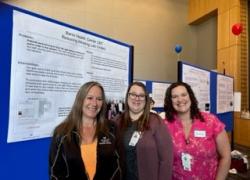
Here it is again – the standing labor-management meeting on your calendar that for months has felt more like a chore than a productive use of your time. With all the other things you have going on, why should you have to sit through another meeting and let the rest of your work pile up? You can remember back to a time when these sessions resolved ongoing workplace issues, but now it seems like there is always something getting in the way of progress.
A Labor-Management Partnership Forum, sometimes referred to as a labor-management committee, serves a valuable purpose by allowing management and workers to sit down together and collaborate on important issues. However, like any recurring meeting, over time they can become stale or even feel counterproductive. All LMPFs experience some type of fatigue over their life cycle. If you find yourself in a similar situation, don’t worry! This is a natural progression in the labor-management relationship, and we’ve outlined some ways to get your LMPF back on track.
How to jump-start your labor-management partnership forum:
1. Hit the reset button
If you are feeling like your LMPF is going through a rough patch, chances are you’re not alone.
Try having an open discussion with your labor or management counterpart, and explain how you are feeling about the lack of positive momentum in your meetings. By identifying existing problems, the group will be able to better diagnose challenges standing in the way of progress. Ensure you set aside enough time for this discussion. Participants will need adequate space to understand the underlying issues and potentially express frustrations about how things have been going. Allowing voices to be heard is a crucial step to help the group move forward.
2. Switch things up
LMPFs are a mechanism to allow labor and management to jointly solve problems. Fine-tuning the process can go a long way in achieving long-term success. Once the group has an open dialogue about what is not working in your LMPF, shift your focus to what can be done to improve the process. Reflect on which aspects of your LMPF have worked and apply those principles to the areas in which your meetings are lacking. Remember to communicate clearly and give honest feedback.
Before any new procedures are implemented, both labor and management should jointly document the changes to ensure transparency. It is important to note that any decisions made to your LMPF should not be done unilaterally, and major results are not going to happen overnight. LMPFs are built on trust and respect, and it takes buy-in from both sides to achieve a mutually beneficial result.
3. Ask for an assist
Defining your LMPF can improve morale and instill confidence in a joint decision-making process. However, there are times when your group is just not able to get things back on track. The Department of Labor provides various labor-management partnership resources to assist with addressing issues in the workplace. For a more hands-on approach, the Federal Mediation and Conciliation Service offers in-depth training and meeting facilitation services to new or ongoing LMPFs in the private and public sectors. Federal employees have access to training on alternative dispute resolution (ADR) and labor relations from the Federal Labor Relations Authority. Whether you are a new group looking for a how- to guide to getting started, or a team of high-performers seeking more efficiency, the department and other federal agencies have tools to help jump-start your labor-management forum.
Andrew Hasty is a senior adviser on detail with the Department of Labor’s Office of Labor-Management Standards. Darnice Marsh is the labor management partnership coordinator in OLMS.

 U.S. Department of Labor Blog
U.S. Department of Labor Blog






